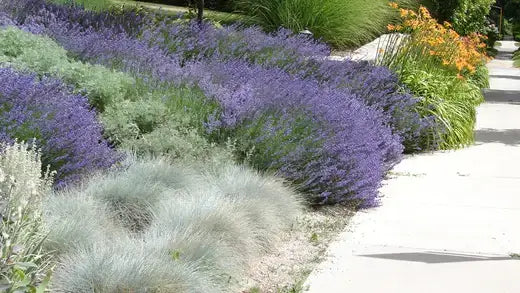Xeriscaping: A Water-Wise Solution for Drought Areas
In the face of increasing water scarcity and the unpredictable impacts of climate change, xeriscaping has emerged as a crucial trend for regions grappling with drought. Xeriscaping is a landscaping approach that conserves water through drought-resistant plants, efficient irrigation systems, and thoughtful design principles. This sustainable landscaping technique has gained popularity for its ability to create beautiful and functional outdoor spaces while significantly reducing water consumption.
The Rise of Xeriscaping in Drought-Prone Areas
Drought-prone areas have long struggled to maintain traditional lawns and ornamental gardens due to the strain on water resources. Xeriscaping offers a practical solution by promoting native plants and low-water-use species that have evolved to thrive in arid conditions. One of the critical reasons xeriscaping has become a trend is its environmental impact. By minimizing water usage, xeriscaping helps alleviate stress on local water supplies, often stretched thin during dry periods. This benefits the immediate community and contributes to the more extensive water conservation efforts and environmental sustainability.
Daylilies: Champions of Drought Tolerance
Among the stars of the xeriscaping movement are daylilies, scientifically known as Hemerocallis. Daylilies are renowned for their vibrant and diverse blooms, but their exceptional drought tolerance sets them apart. These hardy perennials have evolved to withstand dry spells by storing water in their fleshy roots and leaves. Their ability to thrive with minimal water makes them an ideal choice for xeriscaped gardens. Daylilies come in various colors and sizes, offering landscapers and garden enthusiasts the freedom to create visually stunning landscapes without compromising water conservation. Their adaptability to different soil types further enhances their appeal, making them suitable for multiple xeriscaping designs. Daylilies endure drought conditions, providing a burst of color to brighten arid landscapes.
Tuft-Haired Grass: A Resilient Ground Cover
Tuft-haired grass, scientifically known as Nassella tenuissima or Mexican feather grass, is another prominent player in the xeriscaping trend. This grass is celebrated for its delicate appearance and remarkable ability to thrive in dry conditions. Its okay, feathery texture adds a touch of elegance to xeriscaped gardens, contrasting with the broader foliage of other plants. One of the outstanding features of tuft-haired grass is its drought tolerance. Even during prolonged dry spells, it maintains its ornamental appeal, swaying gracefully in the breeze and adding movement to the landscape. However, it's important to note that tuft-haired grass can be invasive in certain regions, displacing native plant species. Therefore, its use should be carefully managed to ensure it doesn't disrupt local ecosystems.
Feather Reed Grass: Structure and Beauty in One
Feather reed grass (Calamagrostis x acutiflora) is a versatile ornamental grass with a special place in xeriscaped gardens. Its vertical growth habit and feathery plumes add structure, texture, and visual interest to landscapes. This grass is valued not only for its aesthetic qualities but also for its drought resistance. Feather reed grass has proven its adaptability to various climates. Its deep root system allows for moisture from deeper soil layers, allowing it to thrive even in dry conditions. This grass can be used as a focal point in a xeriscaped garden, providing height and architectural beauty that complements other low-water plants.
Succulents: Drought-Resilient Beauties in Xeriscaping
Succulents have become darlings of the xeriscaping world, celebrated for their stunning visual appeal and remarkable ability to thrive in water-scarce environments. These fleshy, water-storing plants have earned their place as essential components of xeriscaped landscapes, adding elegance and practicality to gardens in drought-prone areas. Succulents' unique charm lies in their captivating diversity of shapes, sizes, and colors. From the striking symmetry of agaves to the intricately patterned leaves of echeverias, succulents offer an endless array of choices for designing captivating xeriscaped gardens. Their ability to retain water in their leaves and stems allows them to endure extended periods of drought, making them perfect candidates for sustainable landscaping.
In xeriscaping, succulents contribute to water conservation and require minimal maintenance. Their hardiness and adaptability to various soil types mean they can flourish in conditions challenging for other plants. Additionally, their low water needs align perfectly with the principles of xeriscaping, reducing the demand for local water resources and promoting environmental sustainability. Succulents' suitability for xeriscaping extends beyond their aesthetic and practical qualities. These plants often have shallow root systems. Shallow root systems can help prevent soil erosion and promote soil stability. Their presence can also attract beneficial pollinators, contributing to the ecosystem's health.
Whether used as ground cover, focal points, or accents, succulents have earned their reputation as the stars of xeriscaping. Their ability to thrive in arid conditions while adding a touch of natural artistry to the landscape underscores their value in water-wise gardening. As xeriscaping continues to grow in popularity as a solution for drought areas, succulents remain indispensable allies in creating environmentally conscious, visually pleasing outdoor spaces.
A Greener Future Through Xeriscaping
In drought-prone areas, xeriscaping has risen as a transformative trend that addresses aesthetic and environmental concerns. Through the strategic use of drought-tolerant plants like daylilies, tuft-haired grass, and feather reed grass, xeriscaped landscapes come to life with vibrant colors, textures, and shapes. These plants survive and flourish in conditions where traditional landscaping would struggle. As water scarcity continues to be challenging, embracing xeriscaping practices offers a way forward. By reducing water consumption, supporting native species, and fostering sustainable design principles, xeriscaping empowers communities to create lush, inviting outdoor spaces without straining precious water resources. This trend isn't just about conserving water – it's about cultivating a greener, more resilient future for landscapes, ecosystems, and generations.

